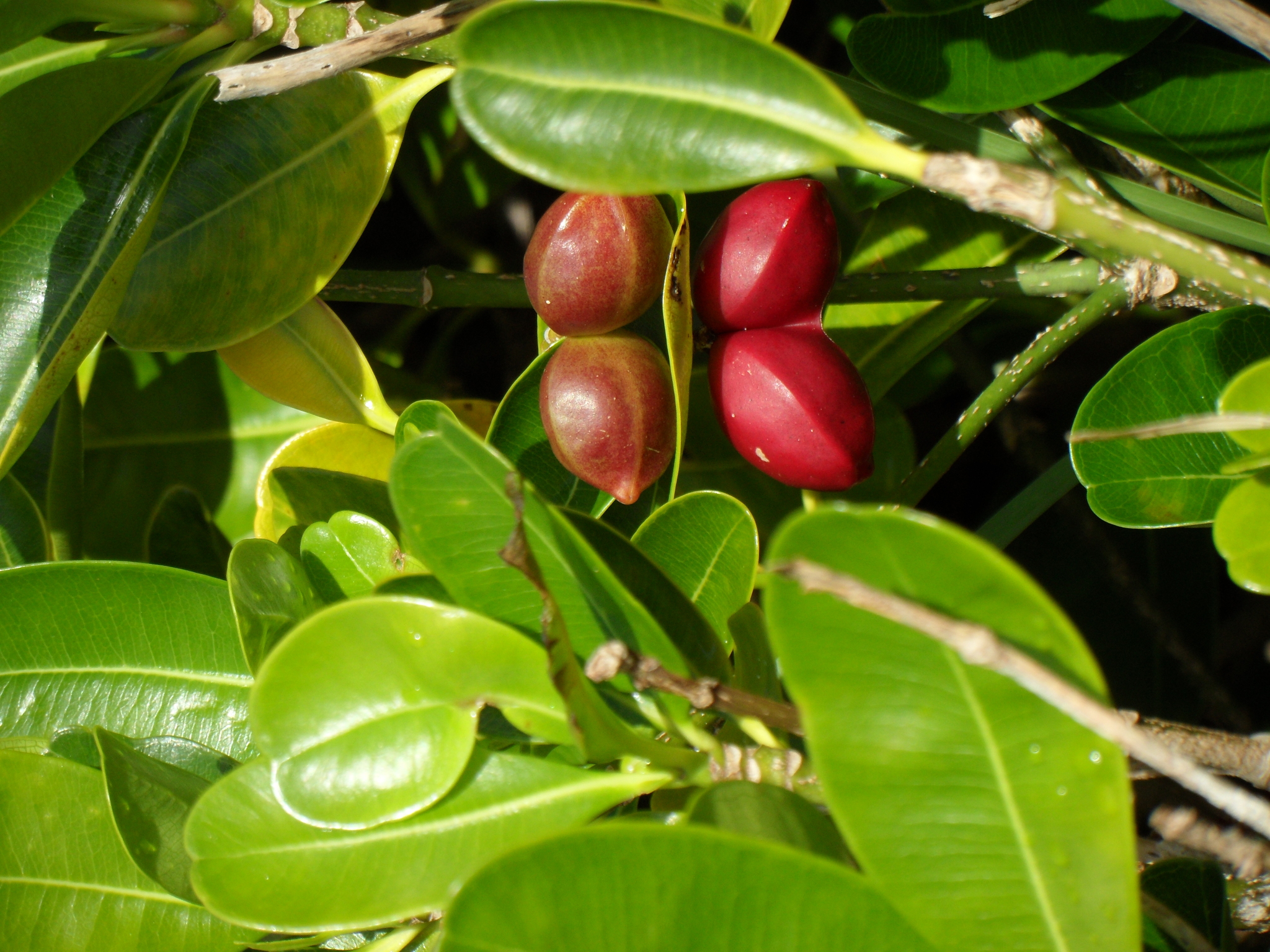
From the Greek ochra — pale yellow, alluding to the colour of the flowers and timber of some species.
Shrubs or small trees, evergreen; latex white. Stems woody, without spines. Leaves opposite, or 3- or 4- whorled, stalked; blade well developed; colleters absent at base. Inflorescence axillary, cymose. Flowers scented, sessile to stalked. Corolla salver-shaped; tube cylindrical, constricted at throat above stamens; lobes convolute in bud, overlapping to the right. Corolline corona absent. Stamens enclosed, attached near top of tube, not sticking to style head. Disk absent. Fruit drupaceous, of separate carpels or rarely syncarpous, cylindrical, ovoid or ellipsoid, often angled. Seeds 2-6, flattened, elliptic to circular, narrowly winged, without hair tufts.
Two species are occasionally grown by rainforest enthusiasts or in public parks.
Frost-sensitive.
Seeds.
Trees, corolla salver-shaped with lobes overlapping to the right in bud; fruit drupaceous, with 2-6 seeds.
About 20 species found in the Mascarene Islands, Malesia, New Guinea, Melanesia and Australia (3 species).
Forster (1996a).
Source: (2002). Apocynaceae. In: . Horticultural Flora of South-eastern Australia. Volume 4. Flowering plants. Dicotyledons. Part 3. The identification of garden and cultivated plants. University of New South Wales Press.
